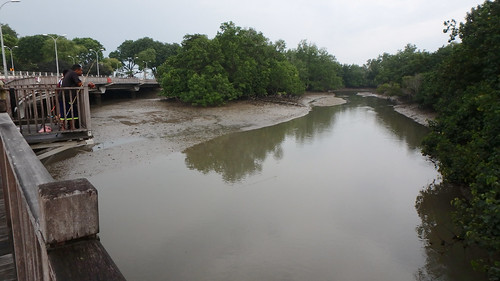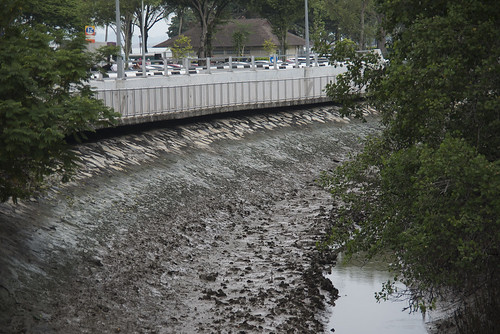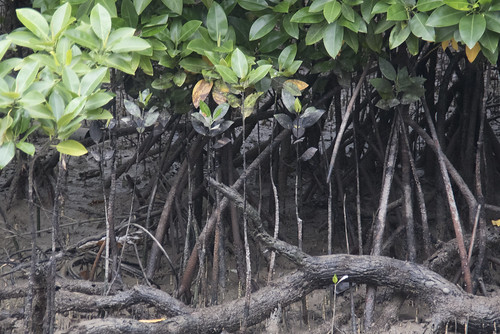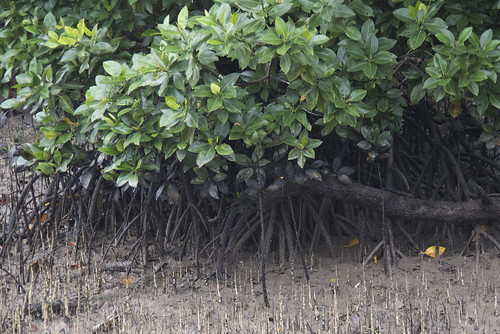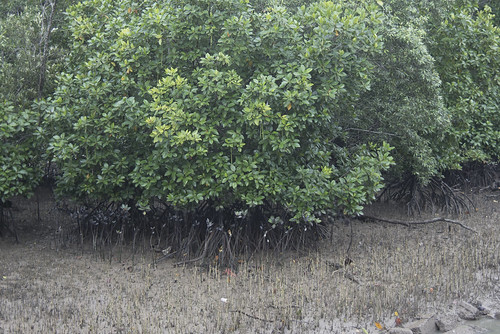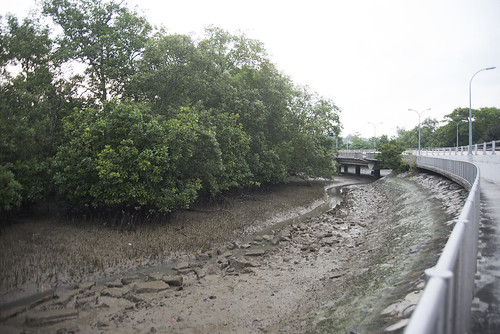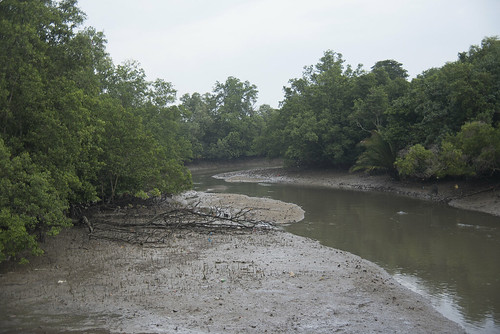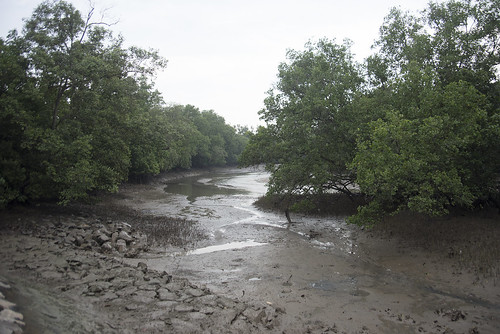Oil appears to have landed on a narrow band at a particular height. While the leaves of some saplings and lower leaves of trees were oiled, the base of the tree roots and the pencil roots (pneumatophores) appear unoiled.
The last patch of wild mangroves at Changi are upstream of Changi Creek.
I had a brief look at the Changi Creek mangroves by walking along the boardwalk next to the road. There was no oil stains on the artificial seawalls near the mangroves.
Oil appears to have landed on a narrow band at a particular height. Probably because the spill reached this area on a neap tide.
While the leaves of some saplings and lower leaves of trees were oiled, the base of the tree roots and the pencil roots (pneumatophores) appear unoiled.
Most of the tree leaves remain nice and green.
Large areas of pencil roots appear unoiled.
From afar, most of the mangroves along the Creek seemed alright.
The mangroves meander much further upstream. Need to allocate a low tide date to check it out more closely.
Today, Chay Hoon and I also surveyed these areas for oil spill impact
- Changi Creek near Changi Point Ferry Terminal
- Changi Beach at Carpark 1 and 2
- Changi seagrass meadows near Changi Point Ferry Terminal
Posts about the Johor Strait oil spill in Jan 2017
- How are Pasir Ris mangroves and seagrass meadows after the oil spill?
- Are we helping or harming when we 'clean' oiled mangroves?
- Oil spill at East Johor Strait: YOUR sightings
- Key happenings: Oil spill at East Johor Strait, Jan 2017
- Survey of oil spill spill impact on Ubin and mainland Singapore, 5 Jan 2017
- Oil spill near Pulau Ubin, 4 Jan 2017

